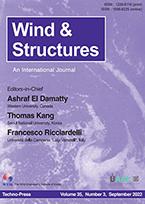AGATHÓN | SDGs 1, 2, 3, 4 and 5 | Projects, research, synergies, and trade-offs | Call for Abstracts
AGATHÓN
- URL: https://www.agathon.it/agathon/home
- Call For Paper Type: Regular
- H2 Index: 0
- Submission Date: 2025-01-15
- Notification Date: 2025-01-30
- Final Version Date: 2025-04-15
Architecture Food Science & Technology Civil Engineering Health & Medical Sciences (General) Nutrition Science Urban Studies & Planning
CALL FOR PAPERS N. 17 | 2025
SDGs 1, 2, 3, 4 and 5 | Projects, research, synergies, and trade-offs
abstract submission deadline | January 15, 2025
The International Scientific Committee, for no. 17 | 2025, which will be published in June, has proposed the subject SDGs 1, 2, 3, 4 and 5 | Projects, research, synergies, and trade-offs. Subsequently, further volumes will be published on the 17 Sustainable Development Goals (SDGs) adopted in September 2015 by the United Nations member states (UN 2015) and promoted as a call for urgent action to combine prosperity, equitable development, and protection of our planet. This would be achieved by valuing cooperation and partnerships between different countries, between national governments and local administrations, between public institutions and private enterprises, and between civil society and individuals. However, only six years after the date given for their attainment, the call seems not to have been fully addressed, if not disregarded, and therefore the scientific community cannot and should not shy away from reflecting on ‘where we have got to’, ‘where we are going’, and ‘where we still might be able to go’.
An assessment of progress based on data was conducted by the Global Sustainable Development Report, which called for appropriate adjustments and an urgent acceleration of implementation policies in two subsequent documents (IGS 2019, 2023): without these adjustments, humanity will face prolonged periods of crisis and uncertainty, further endangering the global principle of ‘leaving no one behind’ and safeguarding the entire ecosystem. While the 2019 Report noted that for some goals, the international community would need to speed up, and for many others, it confirmed that the world was on the right path, the situation portrayed in the 2023 Report is significantly different, as it reveals that for some goals, progress has not accelerated enough, and for others – such as food security, climate action, and biodiversity protection – the world is still moving in the wrong direction.
In light of this scenario, it is more urgent than ever to evaluate ‘what needs to be done and how it can be done strategically’, considering that, as stated by the United Nations during the definition of the SDGs (UN, 2015) and confirmed in the 2019 Report, most goals are synergistic. Social and environmental ones, in particular, have systemic impacts that drive overall progress toward achieving all other SDGs. Despite the rapid growth in the scientific literature on the interconnections between the SDGs and the fact that numerous studies suggest synergies outweigh trade-offs, there is still significant potential, yet to be fully explored and leveraged, to make simultaneous progress on multiple goals through integrated planning and appropriate strategies. Specifically, Goals 1 (No Poverty), 2 (Zero Hunger), 3 (Good Health and Well-being), 4 (Quality Education), 5 (Gender Equality), 6 (Clean Water and Sanitation), 7 (Affordable and Clean Energy), and 17 (Partnership for the Goals) are identified as strategic, as they are capable of generating benefits for many other goals (Barbier and Burgess, 2019; Randers et alii, 2019; Pham-Truffert et alii, 2020).
Nevertheless, achieving the SDGs also necessarily imposes trade-offs that often result in critical issues not resolved by current practices. Examples are the actions and strategies promoting Goal 2 (Zero Hunger), where land cultivation and intensive agricultural practices generate soil degradation, pollution and loss of biodiversity, or those related to Goal 8 (Decent Work and Economic Growth) when uncontrolled growth and development result in exploitation of natural resources beyond sustainable limits. These critical issues are confirmed by the recent Global Sustainable Development Report (IGS, 2023), according to which progress on Goals 14 (Life Below Water) and 15 (Life on Land) is more negatively affected by progress in other areas than positively by specific actions.
Given all these variables, it is essential to carefully understand the interconnections in terms of synergies and trade-offs, both to guide scientific research and define methods and tools that can effectively reduce compromises, address uncertainties, and capitalise on specific context opportunities. This understanding also supports strategic decision-making processes and promotes ‘revolutionary’ interventions. Many tools and methods are currently available for an integrated analysis of the Goals, for decision support, and for progress monitoring (Barquet et alii, 2022), such as the toolbox with guidelines for ex-ante impact assessment promoted by the European Commission (2023). However, considering the systemic effects of policies, pathways, measures, and actions, a greater capacity to think in systems is required, representing the best approach to optimise interactions among SDGs.
In light of these reflections, AGATHÓN addresses the fields of Landscape, Urban Planning, Architectural and Urban Design, Engineering, Architectural Technology, Design, Restoration and Recovery, and Representation and proposes the theme SDGs 1, 2, 3, 4, and 5 | Projects, research, synergies, and trade-offs. The goal is to stimulate an open dialogue by collecting essays, critical reflections, research and experimentation, and innovative multidisciplinary and multiscale projects and interventions. These submissions should employ a systemic approach and address aspects of the process – such as design, production / realisation, and management – along with methodologies and models for ex-ante and ex-post evaluation, while overcoming limitations, gaps, and barriers to enhance synergies and minimise trade-offs with other goals.
The built environment interacts with every goal and also represents a significant challenge, as it consumes vast amounts of energy and natural resources while continuously producing harmful gases and waste. Moreover, the way we intervene can exacerbate inequalities and impact human health. This is particularly relevant in cities, where the importance of both vulnerability and growth opportunities is evident across all the SDGs, especially considering that by 2050, approximately 70% of the global population is projected to live in urban areas (UN-Habitat, 2022). There is once again an urgent need for strategically planned, designed and implemented anthropogenic action consistent with multiple SDGs that can ensure the improvement of a community’s overall quality of life, sustainability, social equity, health and resilience.
SDG 1 | No Poverty | Poverty is more than just a lack of income and resources; it can mean malnutrition, limited access to education and other basic services, as well as lead to discrimination, social exclusion, and lack of participation in decision-making processes. The poverty index is, therefore, multidimensional, considering the deprivations households face in terms of health, education, and standard of living. Architecture disciplines, through their work on the built environment, can mitigate the impact of poverty on people’s lives by planning and developing settlements with services, education, healthcare facilities, cultural and recreational spaces, and affordable, safe, healthy buildings with low environmental impact and reduced operational costs. Additionally, these initiatives can incorporate goods inspired by the ‘reverse innovation’ philosophy.
SDG 2 | Zero Hunger | Land and marine surfaces are rapidly degrading, and climate change is increasing pressure on the resources we depend on, exponentially raising the risks associated with natural disasters. Strategic and site-specific planning, especially in areas where fertile land is scarce due to urban density, harsh climatic conditions, or limited access, can help ensure food security at various territorial scales. This can be achieved through regenerative landscape design and urban agriculture (such as pocket gardens, orchard parks, urban gardens, and vertical farms). Such initiatives can also promote value chains across different productive sectors, contribute to preserving or restoring biodiversity even in densely populated urban areas, support rural development, and foster accessibility, inclusivity, social interaction, and a sense of community belonging.
SDG 3 | Good Health and Well-Being | Ensuring healthy lives and promoting well-being for all and at all ages is important for building prosperous societies. However, despite progress in recent years, inequalities in access to health care, lack of preventive care facilities, and very high levels of environmental pollution persist in several areas of the world. Again, the disciplines of Architecture can play a crucial role in creating a built environment that supports good health and well-being through, for example, the creation of quality social and healthcare facilities, workplaces and residences with a healthy microclimate, optimising natural light, acoustics and indoor air quality, avoiding the use of environmentally harmful materials and substances, and also ensuring flexibility, modularity and accessibility of spaces and objects such that they meet the needs of vulnerable users in particular. The design of green infrastructure, public parks and gardens, public spaces and services for physical activity, as well as product-services, tools and devices, can also contribute to the achievement of the goal, along with urban regeneration interventions that limit vehicular traffic in support of soft and public transportation mobility.
SDG 4 | Quality Education | Achieving quality education is the foundation for creating sustainable development, as it not only improves the quality of life but also helps individuals access a decent income and gain the tools necessary to develop innovative solutions, even for complex issues like climate change and environmental sustainability. The disciplines of architecture can play a key role by providing tools, services, and communicative artefacts that support education, and by designing and redeveloping educational facilities that meet contemporary needs. Such environments should be stimulating, characterised by flexibility of use and multifunctionality, accessible to vulnerable users, and inclusive of ethnic and religious minorities. Acting as social hubs within their communities throughout the year, they can also promote a new culture of sustainability focused on achieving the 17 SDGs.
SDG 5 | Gender Equality | Gender equality is not only a basic human right but a fundamental requirement for a peaceful, prosperous and sustainable world. However, gender inequality, primarily for women, persists throughout the world, denying basic rights and opportunities. The disciplines of Architecture can support Goal 5 through the creation of places to live and move around safely (e.g., with well-lit pathways, safe parking areas, access control systems in public transportation and video surveillance, etc. ), specific social and health services spread throughout the territory, adequately equipped public recreational facilities and spaces, creating the conditions for work-life balance, and maternity and childcare facilities, promoting greater gender equality at home and in the workplace, thus also enhancing the opportunities offered by more significant social interaction, community engagement, active participation in decision-making processes and empowerment within the reference context.














